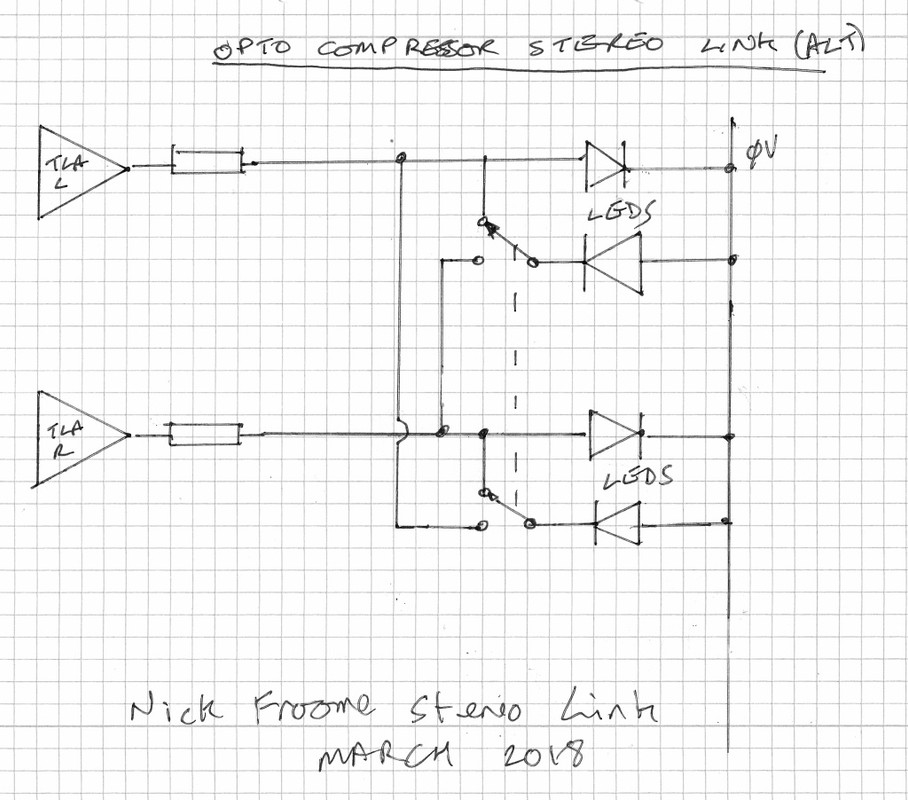ruffrecords
Well-known member
I would say that is the best one to begin with. It has all the right bits in the right places and also provides full wave rectification of the waveform.
Cheers
Ian
Cheers
Ian
rmaier said:Great, so in regard to integrating the gain reduction meter included in earlier versions (schematic attachments to post 1 and reply 8 of this thread), is it simply a matter of running a v.r. and meter in parallel with the 2K resistor after TLA1? If so, what kind of meter scale be suitable, and how is the value of the vr determined?
Thanks!
Ralph
ruffrecords said:Those numbers looks right to me for a regular log style pot with 20dB attenuation at the centre position. I don't know about them being reversed - if pin 1 is the most anti-clockwise position of the switch then they are in the right order.
ruffrecords said:Having switches definitely makes it easier the ensure both channels of a stereo pair are set up the same but we have yet to work out exactly how to link a stereo pair.
Cheers
Ian
rmaier said:That's a question that's been on my mind but I've been a little reluctant to ask... I've looked at a few other comps to see if I can get my head around it but it's pretty slow going as yet. I've also looked at your schematic for the Simple Stereo Compressor using the dual secondary outputs of the Carnhill transformer. Can the same theory be applied here?
Ralph

pvision said:I haven't read all the posts in this thread but had an idea: if you're using two LEDs per channel to drive the Opto, why not stereo link them by swopping sides for two of the LEDs?
So, in mono, the L channel uses LEDs L1 & L2 (and R uses R1 & R2), but, in stereo, L uses L1 & R2 and R uses R1 and L2
That way each opto gets an optical sum of the two sidechains
Nick Froome
ruffrecords said:... It is not clear what, other than the Vactrol characteristics, affect the compressor slope so by all means experiment with additional components to see what effect they have.
Cheers
Ian
rmaier said:Thanks, Ian. I think I'll focus on getting everything working first and leave further tinkering for later.
Ralph
ruffrecords said:That is a good idea. I think I mentioned it in passing many posts back or in the other thread but it is definitely worth revisiting for its elegant simplicity.
